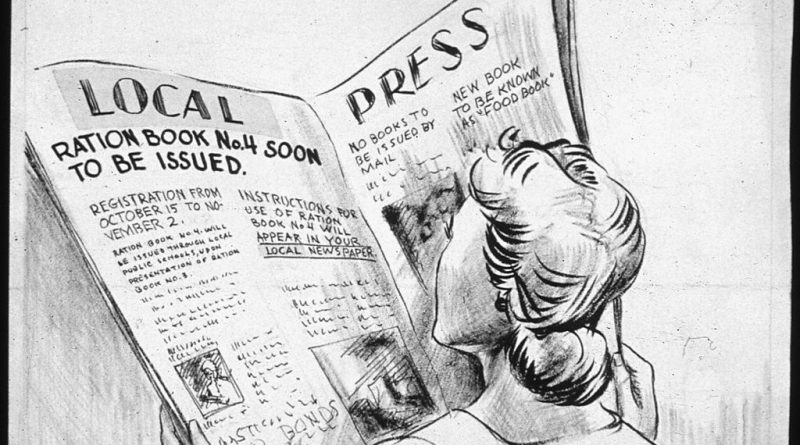How the State of Local News Varies (and Doesn’t) Around the World
Too often, discussions about the state of journalism tend to be national-centric. Given differences across markets, this is not surprising. However, there are often more similarities than many people realize. This April, at the International Journalism Festival in Perugia, I convened a panel of four experts to explore some of these parallels – and differences – in the realm of local journalism.
The State Of Local
The past decade has not been challenging for much of the news industry. But, in the USA, Christopher Ali from the University of Virginia argues small local newspapers (those with a circulation of 50,000 or less) have “been able to weather a lot of the storms that have faced metro and national newspapers.”
There are a myriad of reasons for this, including the fact these outlets are often “the only news voice in the community.” “So, they have a built-in readership and a built-in advertising base,” Ali says.
Although their business model is changing, as more advertising moves online, and local retail markets continue to evolve, “there’s a trust in this kind of incumbency,” he contends. A more gradual pace of change has given some smaller publishers more time to prepare for the digital revolution, Ali suggests.
Daniela Kraus, Director of FJUM in Vienna, also shares elements of Dr. Ali’s optimism, although she reminded the audience that the circulation of a local newspaper in the US (population 321.4 million) may be akin to that of a national title in Austria (population 8.6 million).
“I meet many journalists in our training,” she said, “and there is much more optimism among the local journalists than there is about those working in the national media,” Kraus says.
One key reason for this, Kraus believes, is the strong connection that many local outlets have to their audience.
This connection matters, Rasmus Nielsen from the Reuters Institute for the Study of Journalism observed, because: “With all its many imperfections, people who pay attention to local news are significantly more knowledgeably about local affairs, they are significantly more engaged in local communities, [and] they are significantly more engaged in local politics than people who don’t pay attention to local news.”
That said, Dr. Nielsen, acknowledged a “schizophrenic view” of local journalism held by many commentators.
“A lot of people say that local journalism is terrible, it’s a superficial, it’s differential… [but] sometimes the very same people will also say it may be terrible, but it’s also terribly important. Because it’s often the only immediate connection that a lot of people have with the local community.”
Alison Gow, Digital Innovation Editor with Trinity Mirror Regionals in the UK, echoed some of her panelists enthusiasm about the current state of local journalism, whilst also acknowledging that too often discussions about the industry diverge from this more optimistic outlook.
“If you read most industry commenters and certainly below the line discussions that happen,” she said, “you’d think that local journalism is dead.”
“And what they actually mean is their experiences of local journalism is dead. The industry that they worked in – or that they believed existed- isn’t there anymore,” she adds.
“The people who are retrospectively discussing the newsrooms that I work in wouldn’t recognize them now,” she says. “And I think actually for the better that we exist now. We are leaner… We’re certainly better informed about what the audiences want whether that’s from analytics or from conversations across social media… [and] I think we’re more agile because we have to be.”
Challenges
Across the board, the financial and economic battles faced by local news providers remains an overriding concern.
In Austria, those who diversified early are best place to tackle this, Daniela Kraus revealed, whilst Christopher Ali highlighted opportunities to physically bring people together (e.g. through events) as a way to move beyond traditional income streams.
Getting into the commercial weeds, may make some journalists uncomfortable, but Alison Gown spoke of the financial and editorial synergies her group are seeing from co-locating these teams. “One of the things that you have to do,” she said, “is not treat your journalists in isolation to any other part of the business.”
Gow outlined the importance of reporters incorporating affiliate links in their work, as well as explaining different monetization models for local vs. international audiences. Trinity Mirror, for example, is “currently experimenting with a paywall for overseas visitors around specialized content for Liverpool football club.”
“Journalists, or at least some journalists, [must] take some responsibly, co-responsibility for the commercial side of the organization,” Rasmus Nielsen argued, because “if journalists leave the money side to the money man, then those interests will be dominant.” In that situation, Nielsen feels, “journalists have no right to complain.”
Opportunities
The front page of the Philadelphia Inquirer on the first day of its “Keep it Local” campaign. Source: Wikimedia, Lyonspen
Economics aside, the panel also highlighted the challenge of user engagement. “We are fighting for attention against people who may or may not care that we’re there,” Alison Gow said.
To overcome this, Trinity Mirror is embracing live (from Facebook Live to Live Blogs) as well as using analytics to shape content and times of publication.
“We provide the information that helps people live their daily lives and that gives them solutions to be a part of their community,” she said. “And that might be news. It might be utility content. It might be weather or traffic and travel. It might be deals and jobs. And it might be the kind of ‘10 walks in the bluebell woods to do with your kids,’ which we are doing right now.”
The key question for local journalists to address, she felt, is: “How do I help my community live their life?” That involves asking questions, but it also means that “we don’t talk down where we live.”
“We are a part of the community,” Gow said, “…[and] it might be not a great estate that you live on but you don’t want your local title telling you that, you want them on your side fighting for you.”
Local news providers “have to be relevant and [you have to] engage your audiences,” Daniela Kraus concurred, noting these sentiments are not just editorial considerations.
“We have a local newspaper which is organizing design-thinking workshops to develop new forms of advertising,” she said, highlighting the importance of having a workforce with “a mindset that is not traditional.”
Being unencumbered by the past, Rasmus Nielsen reminded the room, means that “distribution is no longer confined by transmitter range or how far it’s practical and economical to drive your physical print copies and sell them or where your advertisers want to sell their products.”
“The media economy is no longer tied to space the way it was in the past,” he said. “Google and Facebook have far greater penetration in almost every local market that any local media organization has, probably greater than they ever had… [and] we have to face the fact that there’s going to be less money than there was in the past.”
Moving Forward
Nonetheless, for the all of the advantages of digital (from both a consumption and advertising perspective) Nielsen reiterated that “local news organizations have an inimitable advantage in their locality.”
“I think the future has to be one where local news organizations start from the question what is the problem that we solve,” he suggested, encouraging organizations to address this “in a way that is lean [and] very very cost efficient.”
“I think that we accept the fact that whatever local journalism is in the future, it won’t be what it was,” Nielsen said, “it’s going to be something different.”
To do this, Alison Gow indicated, local publications also need to stress their value to regional and national advertisers, as well as their consumers. “They don’t understand our local audience penetration and the scale of the audience we have,” she said.
It may be too early to tell what the future of local journalism will look like. But, as Christopher Ali stressed, many local outlets already understand “that they’re part of the community and therefore have a responsibility to that community.”
Tapping into this more effectively, may help with their editorial distinctiveness and future economic prosperity.
This summary is based on a wider discussion, chaired by the author, at the 2017 International Journalism Festival on “Reimagining local news for the digital age.” Additionaly, this article was originally published for Media Shift.




